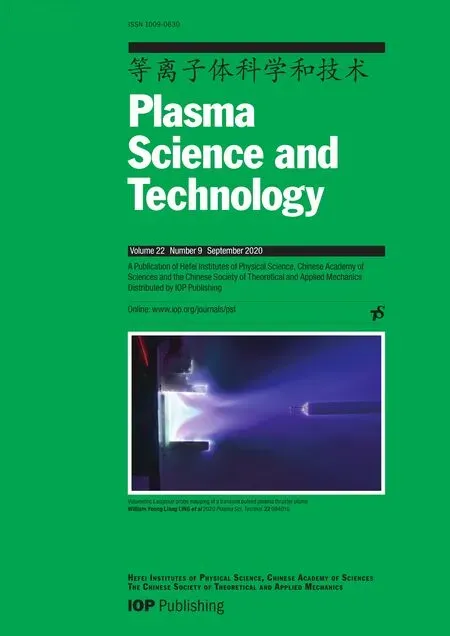Special issue on selected papers from CEPC 2019
Zhiwen WU (武志文) and Hui LIU (刘辉)
1 School of Aerospace Engineering,Beijing Institute of Technology,Beijing 100081,People’s Republic of China
2 School of Energy Science and Engineering,Harbin Institute of Technology,Harbin 150001,People’s Republic of China
The Chinese Electric Propulsion Conference(CEPC)is hosted by Chinese Society of Astronautics and began in 2005.It is the premier conference in the field of electrical propulsion in China.It is held once a year and is attended by leading researchers,specialists,and students in electric propulsion.This special issue contains selected papers from the 2019 Chinese Electric Propulsion Conference(CEPC 2019),which was the 15th CEPC hosted by the Chinese Society of Astronautics,and was held in Nanjing,China,15-17 November 2019.Over 260 participates from more than 60 affiliations such as universities,research institutes,and enterprises in China attended the conference and delivered 133 presentations,including 16 invited talks,107 oral presentations,and 10 posters.This wellestablished event provides a full-scale assembly of contributions from the area of electric propulsion in China.
In recent years,significant advances in the fundamental and applied areas of electric propulsion have been made in China.These include theory,modeling,and numerical simulations,experimental and diagnostic techniques,and the development and on-orbit application of propulsion systems.To date,more than 500 spacecraft,which include geosynchronous satellites,low-earth-orbit satellites,deep-space spacecraft,and small satellites,have been launched globally with a variety of electric propulsion systems.In China,more and more electric propulsion systems are also being tested in space year by year.The annual CEPC started in 2005 as the primary platform for the discussion,exchange,and presentation of innovative ideas and the latest achievements in electric propulsion in China.
The objective of the special issue is to convey the latest advances presented in the CEPC series to readers of Plasma Science and Technology(PST).A total of 16 papers from CEPC 2019 have been selected for this special issue.They cover electric propulsion topics such as physics,diagnostics,modeling,system analysis,and device development.These can provide PST readers with an overview of the latest progress in these topics and help to advance their knowledge regarding electric propulsion.Moreover,future research collaborations with CEPC attendees can also be promoted by the special issue.
As Guest Editors,we would like to thank all the authors for their excellent contributions to CEPC 2019 and this special issue.We also thank the referees for their time spent in careful review and in providing thoughtful comments during the peer-review process.We would also like to express our thanks to the sponsors and organizers of this conference,including the Chinese Society of Astronautics and Nanjing University of Science and Technology.Special thanks go to the PST journal and the Editor,Dr Ping Xu,for the support and help with details pertaining to the publication process of the special issue.In addition,we wish to express our deep gratitude to Professor Daren Yu from Harbin Institute of Technology for his outstanding work in making the CEPC a success and for his productive exchanges with the Editor and Guest Editors.We hope that the special issue for high-quality papers from the CEPC series will continue in the future.
 Plasma Science and Technology2020年9期
Plasma Science and Technology2020年9期
- Plasma Science and Technology的其它文章
- Life test research of a high specific impulse Hall thruster HEP-140MF
- Magnet stage optimization of 5 kW multicusped field thruster
- Application and development of the pulsed plasma thruster
- Simulation study on the influence of magnetic field in the near-anode region on anode power deposition of ATON-type Hall thruster
- Numerical simulation of the plasma acceleration process in a magnetically enhanced micro-cathode vacuum arc thruster
- Discharge instability in a plasma contactor
